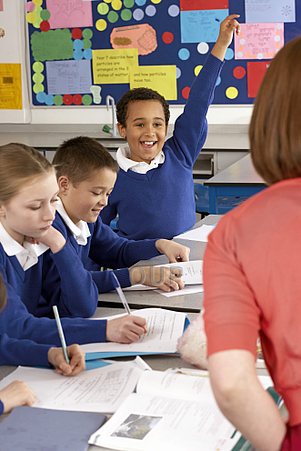 Peter Redpath, co-author of Incredible English 2nd edition, looks at the concepts of accurancy and fluency in young English language learners.
Peter Redpath, co-author of Incredible English 2nd edition, looks at the concepts of accurancy and fluency in young English language learners.
If you think about it, we need to give children plenty of listening practice in order to help them speak. It’s logical. It follows the natural route of language acquisition: given the right conditions, input (listening) will become output (speaking).
So, one of the best ways to get children speaking English is to provide them with lots of listening practice and guide them into spoken production. Children may not see the point in learning another language: it has no reality in their world. But they have less of a problem in using or repeating another language when they are having fun.
How can we make this happen in the classroom? Let’s look at one way of doing this.
An animated story is a perfect vehicle for moving children from listening to speaking. For a start, most children like stories. They are fun and engaging and children enjoy them. Stories are part of their reality: storytelling is an activity to which children are accustomed. More than that, stories are based on real life and so they are relevant.
When they are trying to understand a story, the language has a purpose. It is given a context and it becomes meaningful. Participating in a story gives them a reason for understanding.
Above all perhaps, children love stories. They can listen to them again and again and never become bored. Stories often have strong repeated phrases. For example, how does this line from a famous children’s story finish: “I’ll huff and I’ll puff and I’ll blow….”? Small children will often join in and say these powerful, repeated lines. They are acquiring language.
In our context as language teachers we can take advantage of this strong human urge and the powerful human activity of storytelling. The stories in our coursebooks are often vehicles for the language we want to introduce to the children. The language that is repeated in the story is usually the language that we want children to “get”.
Helping children to act out a story can be a fruitful classroom activity. Most children enjoy it (but do keep in mind that not all children enjoy it). The specific language aim is to activate a piece of language.
Here are some thoughts about speaking and error correction. The idea of “private practice” and “public performance” may be worth bearing in mind. Or, maybe the concepts of accuracy and fluency.
As they practise, go around helping them say the language. If you like, this is private practice and so getting it right (and that means correction by you, the teacher) is important. They are not exposed in front of the whole class. They are in a private space with you and a small peer group. They are more likely to hear and respond to your correction when they are not exposed in front of the whole group.
When a group shows their story to the whole class I think the dynamic has shifted. I think it’s very important to give positive feedback as this is happening. Help them say the language if they need it, but avoid overt correction. This is now a public performance and so correction is probably inappropriate. Having fun and being motivated is far more important than language accuracy.
Correcting errors is an important part of our work as language teachers. But over correction will demotivate the children. I need to be principled about what I correct and, perhaps more importantly, when I correct it.
How do you encourage accuracy and fluency of language in your classroom?

